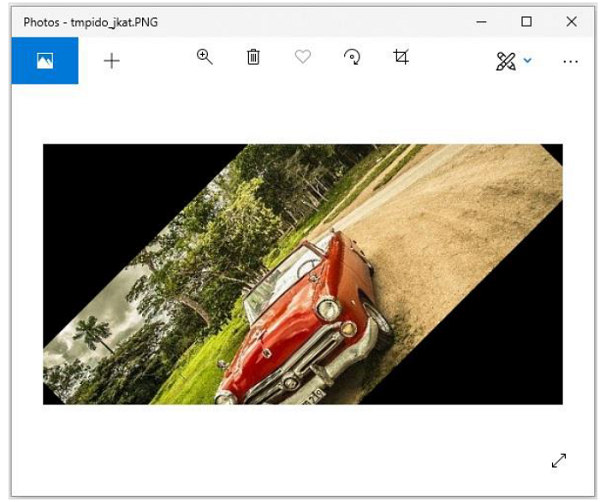
- Python Pillow Tutorial
- Python Pillow - Home
- Python Pillow - Overview
- Python Pillow - Environment Setup
- Python Pillow - Using Image Module
- Python Pillow - Working with Images
- Python Pillow - Creating Thumbnails
- Python Pillow - Merging Images
- Python Pillow - Blur an Image
- Python Pillow - Cropping an Image
- Python Pillow - Flip and Rotate Images
- Python Pillow - Resizing an Image
- Python Pillow - Creating a Watermark
- Python Pillow - Adding Filters to an Image
- Python Pillow - Colors on an Image
- Python Pillow - ImageDraw Module
- Python Pillow - Image Sequences
- Python Pillow - Writing Text on Image
- Python Pillow - M L with Numpy
- Python Pillow Useful Resources
- Python Pillow - Quick Guide
- Python Pillow - Useful Resources
- Python Pillow - Discussion
Python Pillow - Using Image Module
To display the image, pillow library is using an image class within it. The image module inside pillow package contains some important inbuilt functions like, load images or create new images, etc.
Opening, rotating and displaying an image
To load the image, we simply import the image module from the pillow and call the Image.open(), passing the image filename.
Instead of calling the Pillow module, we will call the PIL module as to make it backward compatible with an older module called Python Imaging Library (PIL). That’s why our code starts with “from PIL import Image” instead of “from Pillow import Image”.
Next, we’re going to load the image by calling the Image.open() function, which returns a value of the Image object data type. Any modification we make to the image object can be saved to an image file with the save() method. The image object we received using Image.open(), later can be used to resize, crop, draw or other image manipulation method calls on this Image object.
Example
Following example demonstrates the rotation of an image using python pillow −
from PIL import Image
#Open image using Image module
im = Image.open("images/cuba.jpg")
#Show actual Image
im.show()
#Show rotated Image
im = im.rotate(45)
im.show()
Output
If you save the above program as Example.py and execute, it displays the original and rotated images using standard PNG display utility, as follows −
Actual image

Rotated image (45 degrees)

Attributes of Image Module
The instance of the Image class has some attributes. Let’s try to understand few of them by example −
Image.filename
This function is used to get the file name or the path of the image.
>>>image = Image.open('beach1.jpg')
>>> image.filename
'beach1.jpg'
Image.format
This function returns file format of the image file like ‘JPEG’, ‘BMP’, ‘PNG’, etc.
>>> image = Image.open('beach1.jpg')
>>>
>>> image.format
'JPEG'
Image.mode
It is used to get the pixel format used by the image. Typical values are “1”, “L”, “RGB” or “CMYK”.
>>> image.mode 'RGB'
Image.size
It returns the tuple consist of height & weight of the image.
>>> image.size (1280, 721)
Image.width
It returns only the width of the image.
>>> image.width 1280
Image.height
It returns only the height of the image.
>>> image.height 721
Image.info
It returns a dictionary holding data associated with the image.
>>> image.info
{'jfif': 257, 'jfif_version': (1, 1), 'dpi': (300, 300), 'jfif_unit': 1, 'jfif_density': (300, 300), 'exif': b"Exif\x00\x00MM\x00*\x00\x00\x00
....
....
\xeb\x00\x00'\x10\x00\x00\xd7\xb3\x00\x00\x03\xe8"}
Image.palette
It returns the colour palette table, if any.
>>> image.palette
Output above − None